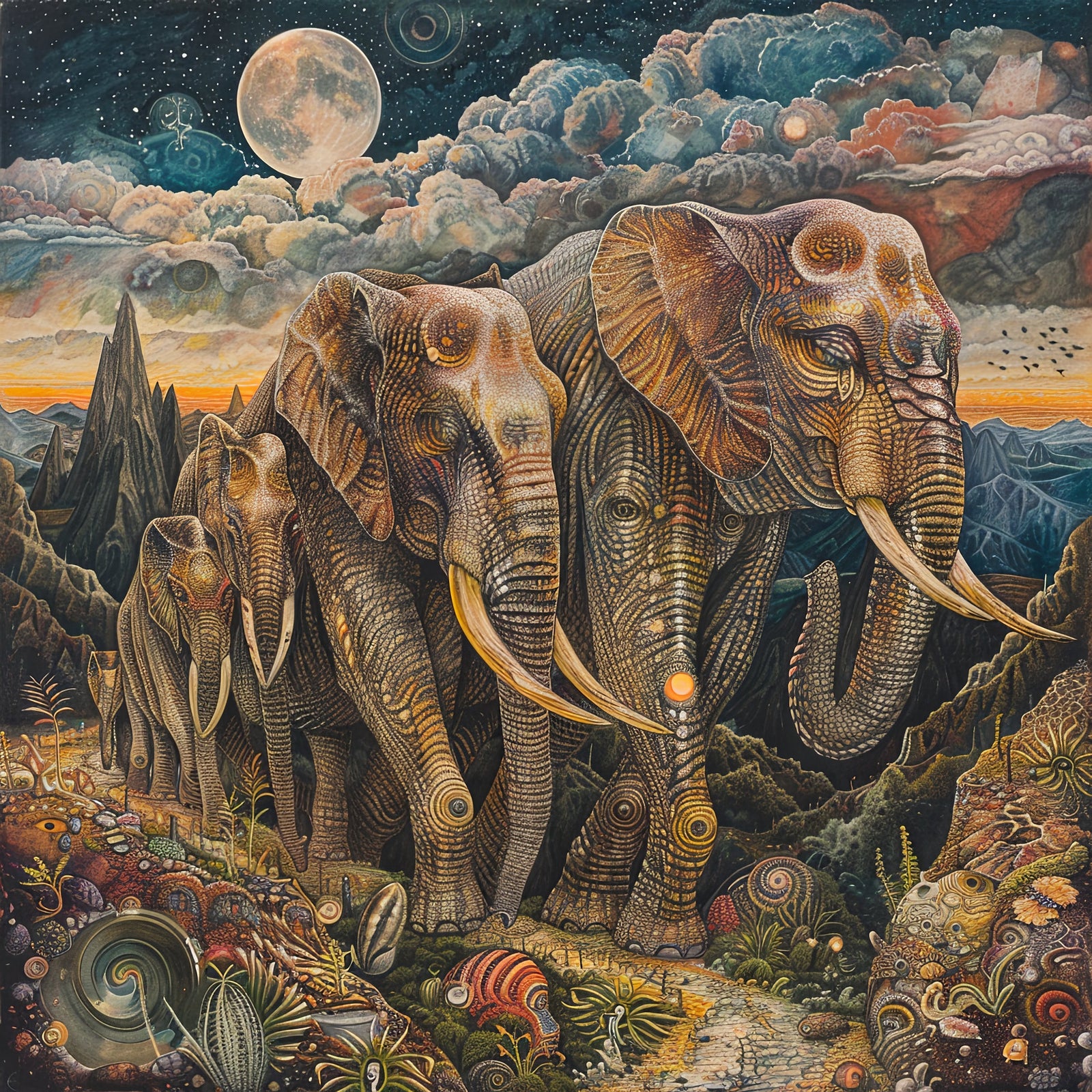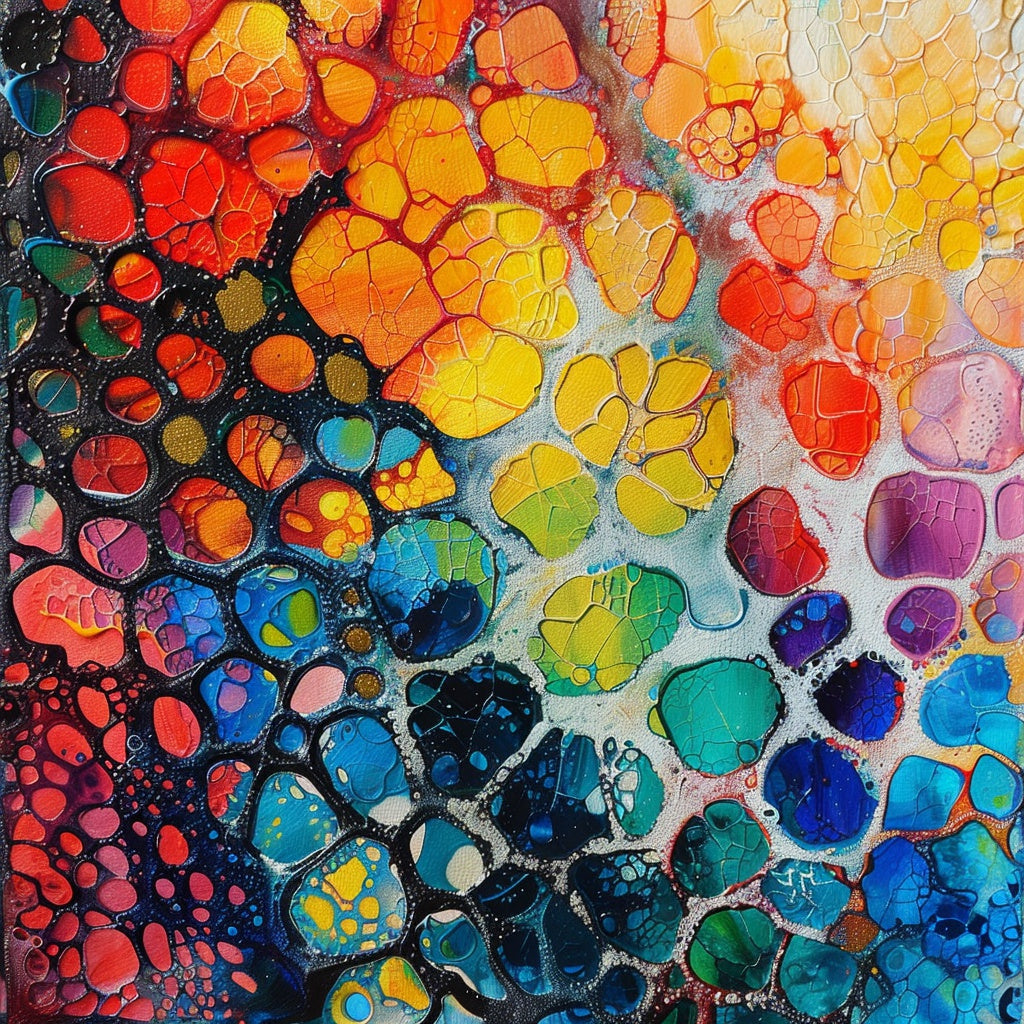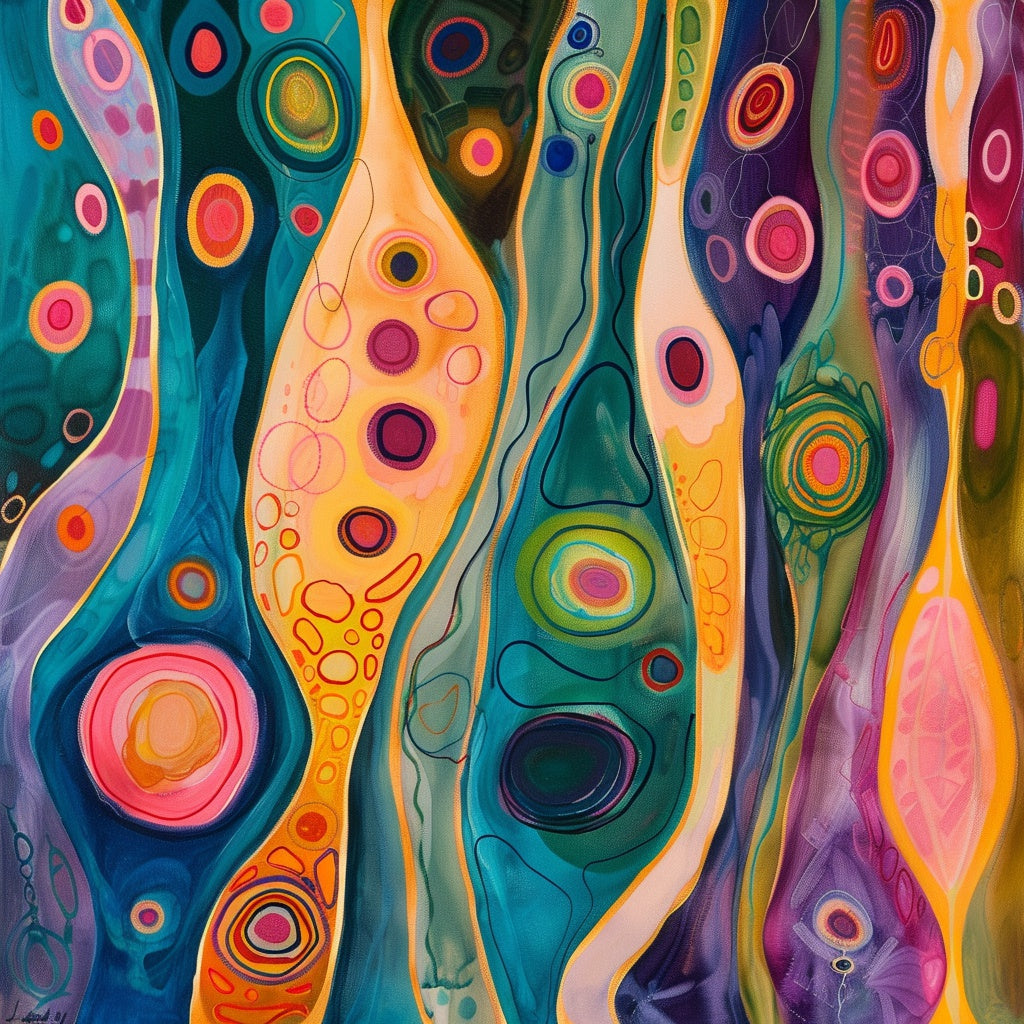The AI Art Revolution: Transforming Creativity and Expression
The art world is dramatically transforming, fueled by the rapid advancements in artificial intelligence (AI). AI art technology is no longer a futuristic concept; it's a tangible reality, reshaping how art is created, experienced, and perceived. From generating stunning visuals from simple text prompts to enabling immersive art experiences, AI is pushing the boundaries of artistic expression. This post will delve into the latest advancements in AI art, exploring the innovative models, techniques, and applications that are driving this creative revolution.
Table of Contents
- New AI Art Models and Algorithms
- New Techniques for Creating AI Art
- Examples of AI-Generated Art
- AI Art Detection
- Other Applications of AI in Art
New AI Art Models and Algorithms
At the forefront of the AI art revolution are the sophisticated models and algorithms that can generate high-quality images from text prompts. These models have democratized AI art creation, allowing individuals with no traditional artistic training to produce unique and visually appealing images. These models are incredibly talented digital artists who can visualize your words. For instance, if you type "a futuristic cityscape at sunset," these models can generate a stunning image that matches that description.
DALL-E 2
Developed by OpenAI, DALL-E 2 is a powerful AI system that can create original, realistic images and art from text descriptions. Combining concepts, attributes, and styles can generate novel visual outputs. It is like a digital chameleon, capable of adapting to various styles and concepts. For example, you could ask it to create "a photorealistic image of a cat wearing a space suit," DALL-E 2 will deliver a high-quality image blending these distinct ideas. DALL-E 2’s ability to capture intricate details and complex concepts with minimal input is a testament to the advancements in AI technology.
Midjourney
Midjourney, another prominent AI art generator, operates through a Discord server and utilizes large language and diffusion models to create images from text prompts. It is like having an AI art studio accessible via chat. Users can input text prompts describing their desired image, specifying artistic styles like "isometric anime" or "watercolor landscape," Midjourney will generate images reflecting those styles. Midjourney’s versatility in handling different artistic styles makes it a favorite among many AI artists. It's like having an artist who is familiar with all art genres at your fingertips.
Stable Diffusion
Stable Diffusion, an open-source model, is capable of generating photorealistic images given any text input, offering a high degree of control over the output. This model stands out due to its open-source nature, making it accessible to many users and developers. It’s like having an AI model you can freely experiment with. Stable Diffusion’s flexibility has created diverse outputs, from realistic portraits to surreal landscapes, allowing artists to explore different creative possibilities.
ImageBind and Gemini
In 2023, Meta released ImageBind, a groundbreaking AI model that combines multiple modalities, including text, images, video, thermal data, 3D data, audio, and motion. This multimodal approach is like creating art that responds to multiple senses. Google also unveiled Gemini in December 2023, a multimodal AI model in four versions: Ultra, Pro, Nano, and Flash. These models are designed for different applications, offering varying levels of capabilities. These multimodal models demonstrate the rapid progress in AI art technology, making the art creation process more interactive and immersive.
New Techniques for Creating AI Art
Beyond new models and algorithms, recent advancements in AI art technology have also introduced innovative techniques for creating art. These techniques are expanding the creative possibilities for artists and changing the ways we interact with art.
Text-to-Image Synthesis
Text-to-image synthesis is a prime example, where AI models generate images based on detailed text prompts. This technique allows artists to generate visuals for storytelling, advertising, and artistic expression. DALL-E can transform poetic descriptions into high-quality images, turning written words into visual masterpieces. It's like giving a digital artist a detailed script and seeing them bring it to life visually.
Style Transfer
Style transfer is another exciting technique that has seen significant advancements. AI algorithms can now transfer the stylistic aspects of one image to another, allowing artists to experiment with different styles and create unique art pieces. It's like applying Van Gogh's painting style to a photograph you have taken. AdaIN gives users more control over the degree of style transfer, and multi-style transfer allows artists to combine several styles in one image. These techniques provide a playground for artistic experimentation.
AI-Assisted Creative Tools
AI-assisted creative tools have also emerged, offering artists new ways to discover and extend their creative process. These tools use AI algorithms to generate ideas, sketches, or even complete artwork, making the creative process more collaborative and dynamic. Think of it as a creative partner that can help overcome creative blocks. DeepDream and Runway ML provide intuitive interfaces for artists to experiment with AI models. These tools make art creation more accessible and open new avenues for artistic exploration.
AI-Powered 3D Printing
AI-powered 3D printing is revolutionizing sculpture and three-dimensional art forms. Artists can now create intricate and complex structures previously impossible to produce by hand. It's like bringing digital designs into the physical world with incredible precision. This technology allows for greater precision and detail in sculptures, pushing the boundaries of what's possible in three-dimensional art.
Data Painting
The concept of "data painting" is another innovative approach to AI art. Artists like Refik Anadol use data-driven machine-learning algorithms to create abstract environmental art. By harnessing data from various sources, such as nature, urban life, and culture, these artists create visualizations that capture the essence of the data in a visually stunning way. It's like creating a painting from the very fabric of the world, where data is the new paint.
Immersive Art Installations
AI is used to create interactive and immersive art installations. Augmented reality (AR) and virtual reality (VR) technologies transform art into immersive experiences beyond traditional media. AR installations allow digital elements to overlay physical spaces, creating interactive experiences that evolve as viewers move. Similarly, VR has opened entirely virtual galleries, accessible from anywhere, where users can experience art in fully immersive digital environments. These immersive technologies bring art to life, making it more engaging and interactive.
Examples of AI-Generated Art
The impact of these advancements is best seen through the diverse and stunning examples of AI-generated art. These examples demonstrate AI art technology's wide range of artistic styles and creative possibilities.
DALL-E 2 Examples
DALL-E 2 can create highly detailed and visually complex images from minimal input, showcasing the power of AI in capturing intricate details. One example is an image of "an astronaut riding a horse," demonstrating the AI's ability to combine seemingly disparate concepts into a cohesive and realistic image. This ability to blend unusual ideas into a coherent image demonstrates the power of AI in the arts. It is like mixing paint colors that seem like they would clash but end up creating something extraordinary.
Midjourney Examples
Midjourney allows users to generate images with various artistic styles, from photorealistic to abstract. Users can input text prompts with specific artistic styles, such as "isometric anime" or "watercolor landscape," Midjourney will generate images that reflect those styles. This is like a digital artist who can perfectly recreate any style. Midjourney’s ability to adapt to different art styles showcases the versatility of AI art models.
Stable Diffusion Examples
Stable Diffusion has been used to create images ranging from realistic portraits to surreal landscapes, highlighting the model's ability to generate diverse and creative outputs. Examples include "a mythical forest portal," "a thoughtful woman portrait," and "an adorable fantasy creature," demonstrating the wide range of possibilities with Stable Diffusion. It is like a blank canvas, ready to be transformed into any imaginable art. This showcases the wide range of artistic expression possible with AI tools.
DeepDream Examples
DeepDream, a project by Google, uses a neural network to generate psychedelic and surreal images from existing photos. These images often have a dream-like appearance, with swirling patterns and vibrant colors, showcasing the unique aesthetic possibilities of AI art. One example is an image of "The Mona Lisa with the DeepDream effect," where the iconic painting is transformed into a swirling, psychedelic landscape. It is like giving a familiar painting a surreal, dreamlike twist. This showcases the transformative power of AI in art.
Adobe Firefly Examples
Adobe Firefly, another AI art generator, allows users to create images from text prompts, apply generative fill and even turn 3D models into images. Users can input prompts like "a portrait of a woman" or "a 3D illustration of a building in synth-wave style," Firefly will generate corresponding images. It is like a powerful digital toolbox for artists that can do various tasks. The versatility of Adobe Firefly demonstrates the potential of AI in both 2D and 3D art creation.
AI Art Detection
As AI-generated images become more prevalent and realistic, the need to distinguish them from human-created art and photographs has become increasingly important. To address this, AI art detection platforms are being developed. These platforms use AI algorithms to analyze images and identify characteristics that suggest they were generated by AI. Think of it like a detective looking for clues that reveal the artwork's origin. These platforms are essential for maintaining transparency and authenticity in the art world.
AI Art Detection Platforms
Some of the leading AI art detection platforms include:
- Illuminarty: Uses machine learning to detect subtle artifacts and patterns in images that are characteristic of AI generation.
- AI or Not: Analyzes images and provides a probability score indicating whether the image is AI-generated or human-made.
- Is It AI?: Uses a combination of techniques, including deep learning and computer vision, to identify AI-generated images.
Other Applications of AI in Art
AI's impact on art goes beyond just image generation. It is also used in art history, conservation, and social commentary.
AI and Art History
AI algorithms can analyze vast datasets of cultural artifacts, providing new insights into artistic movements, cultural evolution, and the historical context of art. This can lead to a deeper understanding of art history and a more nuanced appreciation of art forms. It is like having a super-powered research assistant that can analyze art history data quickly and efficiently. AI is revolutionizing how we study and understand art history.
AI in Art Conservation
AI is being applied to art conservation and restoration. AI algorithms can analyze artwork images to identify damage areas, predict future deterioration, and assist conservators in restoring artworks to their original condition. It is like having an AI conservator, helping to preserve art for future generations. This technology can help preserve cultural heritage and ensure that valuable artworks are protected for future generations.
AI Art and Social Commentary
AI art can also address social and environmental issues. Artists are using AI to create "eco-art" that raises awareness about environmental challenges like climate change and pollution. It is like using art as a powerful voice, speaking on important issues. This highlights the potential for AI art to contribute to social and environmental awareness and inspire action.
AI Art and the Human-Machine Relationship
AI art is being used to explore the relationship between humans and machines. Artists are using AI to examine the implications of technology on humanity, creating art that reflects the evolving relationship between humans and intelligent machines. It is like a mirror, reflecting on the impact of technology on our lives. This adds another dimension to the discussion of AI art, prompting us to consider the philosophical and existential questions raised by the increasing integration of AI into our lives.
AI Art and Cultural Diversity
It is important to ensure that AI art reflects cultural diversity and challenges Western-centric biases in art. By incorporating diverse datasets and perspectives into the development of AI art models, we can promote inclusivity and ensure that AI art represents a wide range of cultural expressions. It is like opening up the art world to different perspectives and ideas. This can lead to a more vibrant and diverse art world that celebrates different cultures and artistic traditions.
Conclusion
The advancements in AI art technology are not just a trend; they are a revolution that is reshaping the art world. New AI models and algorithms have democratized art creation, allowing anyone to generate unique and visually stunning images. Innovative techniques are expanding the creative possibilities for artists, enabling them to explore new styles and generate art from text prompts. AI is used in many other facets of the art world, from art history to conservation. The increasing accessibility of AI art tools empowers individuals without traditional artistic training to create art, challenging the established art world and its gatekeepers.
The future of AI art is full of possibilities. As AI models become more sophisticated and accessible, we can expect to see even more innovative and creative applications of AI in the art world. AI art has the potential to transform how we create, experience, and understand art, pushing the boundaries of artistic expression and challenging our perceptions of what art can be. It’s like entering a new era of art where the boundaries of creativity are being constantly challenged and redefined.
Footnotes:
2 Web Quick Start - Midjourney Documentation
4 How to Use Midjourney to Create AI Art in 2025 (Detailed Tutorial) - Elegant Themes
5 Generative artificial intelligence - Wikipedia
6 Top 10 Latest Advancements in AI Art Generation - Analytics Insight
8 'Painting' with data: how media artist Refik Anadol creates art using generative AI - WIPO
9 The Future of Art and Technology: Key Trends Shaping the Creative Landscape - Medium
10 How to Make AI Art in 2025 (Detailed Tutorial) - Elegant Themes
11 32 Images by Midjourney V5.2: Your Ultimate Guide | by Exquisite Workers - Medium
12 The Rise of AI-Generated Art: A Look at the Latest Tools and Trends | by Akhil Regonda
14 Adobe Firefly - Free Generative AI for creatives
15 Adobe Firefly takes AI image generation to the next level - YouTube
16 Using AI Tools to Create Art - AI Tools for Students - Research Guides - LibGuides
17 AI Art: Exploring the Pros, Cons, and Ethical Dimensions - Vision Factory
18 The Ethical Implications of AI on Creative Professionals | by Dirk Steynberg - Medium
19 AI, Art, and Creativity: Exploring the Artist's Perspective - Salzburg Global
20 Art in the Age of AI: The Changing Role of Artists - AGI Fine Art Blog
21 From Algorithms to Masterpieces: Embrace the Beauty of AI-Generated Art



Leave a comment (all fields required)